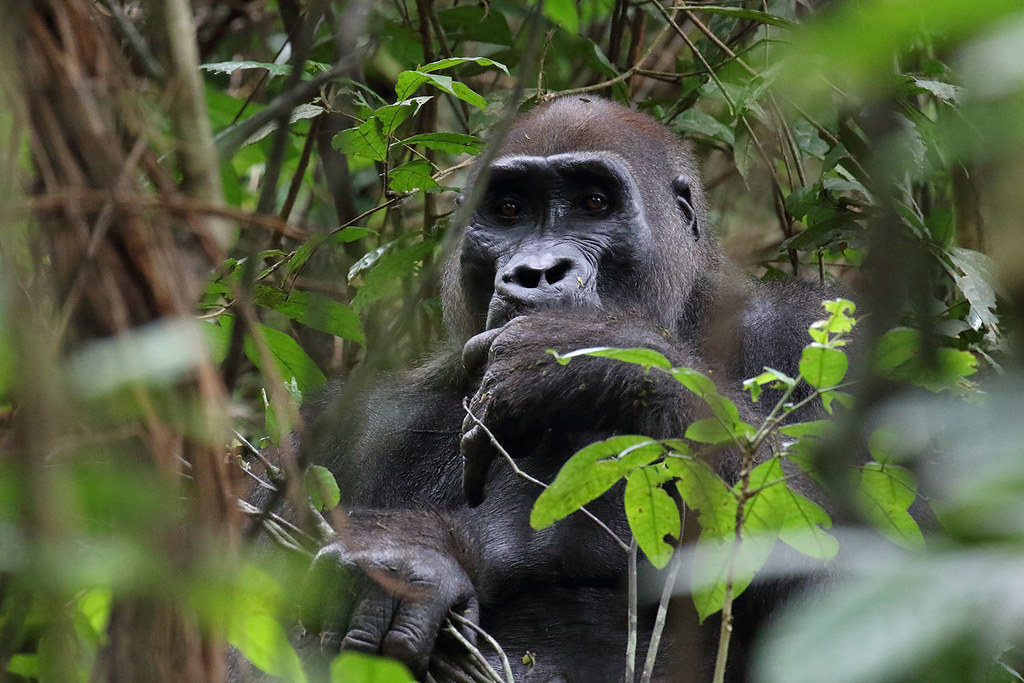
Everything You Need to Know About Gorilla Trekking
Frequently Asked Questions (FAQs)
There are a multitude of inquiries that may arise for individuals who are enthusiastic about embarking on the exhilarating adventure of gorilla trekking. The objective of this frequently asked question section is to provide an overview of the most significant aspects of this extraordinary experience, including the optimal seasons for mountain gorilla tracking in Rwanda and Uganda.
In Uganda, where are mountain gorillas monitored?
In Uganda, mountain gorillas are monitored in the tropical rainforests of Bwindi Impenetrable National Park, which is renowned for its diverse and endangered species, and Mgahinga National Park in Southwest Uganda. Furthermore, Volcanoes National Park, situated in the northeastern region of Rwanda, provides an additional opportunity for gorilla trekking. Gorilla trekking is accessible year-round in both nations.
What are the obstacles associated with chimpanzee trekking during the low season?
In the Impenetrable woods, the low season is characterized by heavy rains in March, October, and November, which can make it difficult to hike and trace due to the slippery and muddy trails. This period necessitates the use of a four-wheel drive. Nevertheless, certain trackers derive some solace from the low season, as gorilla permits are priced at the same level as those during the high season ($1500 in Rwanda and USD800 in Uganda). Budget-conscious trackers are attracted to the more favorable accommodation costs, which are a result of lower occupancy rates. The low season offers a more intimate gorilla monitoring experience, as there are fewer visitors.
What are the benefits of trekking gorillas during the peak season?
During the arid seasons of June, July, August, September, and a portion of October and December, as well as February, the high season provides favorable conditions for gorilla tracking. In Rwanda, the expense of gorilla permits is $1500, while in Uganda, it is USD700. This demand is exacerbated by a lack of rainfall. Mountain gorillas flourish in regions with a raised landscape and temperate weather, which offer a mild climate year-round, making them ideal for extended tracking sessions.
What is the Kwita Izina ceremony in Rwanda?
The Kwita Izina ceremony in Rwanda is a ceremony that commemorates the naming of recently born mountain gorillas. Volcanoes National Park is an intriguing destination during this period. The ceremony is free of charge; however, visitors are permitted to traverse the park concurrently, thereby gaining access to cultural experiences and entertainment.
What is the optimal duration for my gorilla tracking tour?
It is advisable to allocate a minimum of three days for a gorilla tracking excursion. The first day entails the journey to the park, the second day is reserved for the pursuit of gorillas, and the third day is reserved for the return journey.
Is it advisable to employ a porter to conduct gorilla tracking?
It is strongly advised to employ a porter for the purpose of monitoring gorillas. Porters are available to assist with the transportation of luggage, thereby enabling you to concentrate on the observation of the endangered gorillas. They are especially beneficial when traversing difficult terrain, which may be muddy and treacherous. In addition to facilitating your voyage, employing a porter also contributes to the livelihoods of the local community. A complete day of service typically costs between $15 and $20.
Is it guaranteed that I will be able to observe the gorillas with a gorilla tracking permit?
Although mountain gorilla permits are non-refundable once purchased, there is a 95% likelihood of encountering these gentle creatures during the tracking session. Medical reasons are the sole basis for refunds, necessitating a medical certificate as evidence. It is crucial to acknowledge that the possession of a gorilla tracking permit does not guarantee a sighting; however, it significantly increases the probability.


